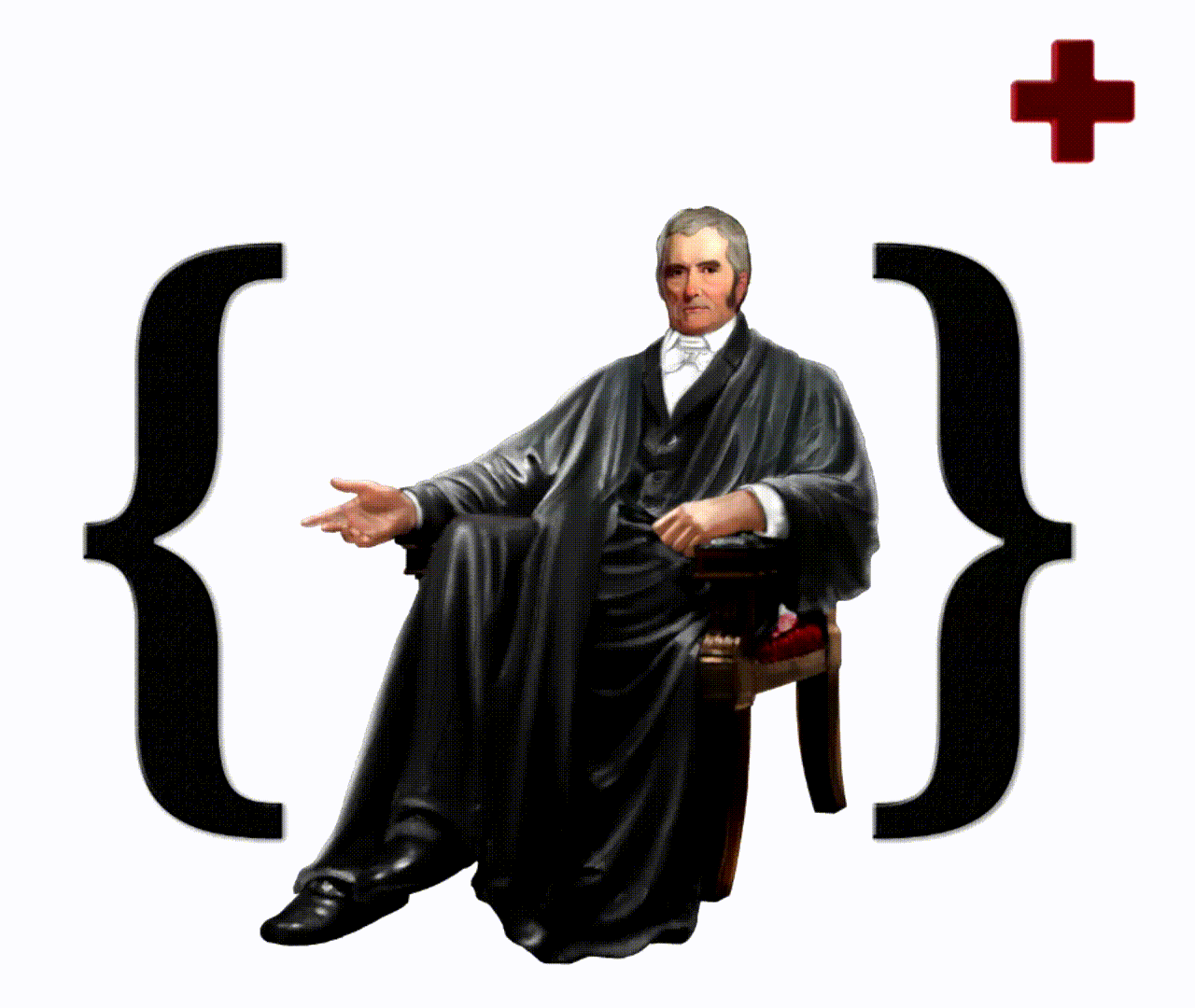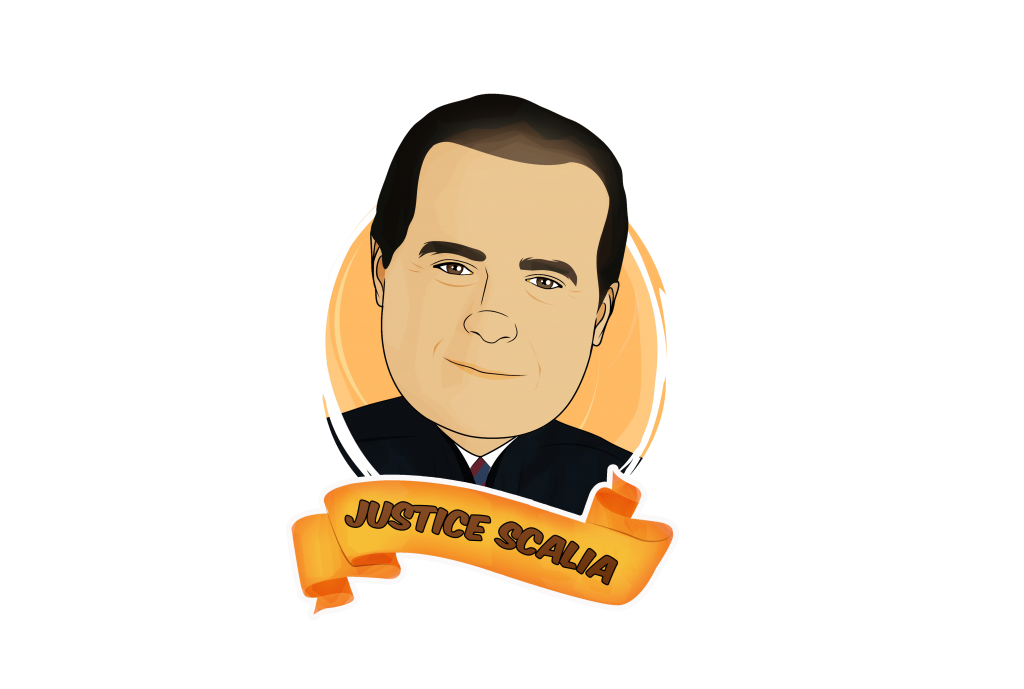During a keynote speech to HRC (Human Rights Campaign), Vice President Biden offered these remarks about Obergefell:
The vice president opened by discussing praise he has received for the Meet the Press interview when he endorsed marriage equality in 2012. Biden quickly pivoted the focus back to the audience, however, saying this June’s marriage equality ruling “is not because of any national figure who spoke out,” but is instead because of the people in the room and thousands of others “who have had the courage to stand up and speak, to speak their hearts and minds.”
He continued: “You left the Supreme Court absolutely no choice, no choice whatsoever — I mean that — but to recognize the simple proposition my father taught me 50 years ago,” which, he had earlier said, was, when the Bidens saw a gay couple kissing on the street when the vice president was growing up, “They’re in love with each other, it’s that simple.”
You may recall that in 1987, after the Bork nomination imploded, Larry Tribe pushed for Justice Kennedy’s nomination, as part of his counsel to Senator Joe Biden, who then chaired the Senate Judiciary Committee. Linda Greenhouse reported at the time:
The chairman of the Senate Judiciary Committee, Senator Joseph R. Biden Jr., said: ”I’m glad the President has made his choice. We will get the process under way and move as rapidly as is prudent. We want to conduct the committee’s review with both thoroughness and dispatch.” ….
Laurence H. Tribe, the Harvard Law School professor and a liberal who has been a close adviser to Senator Biden, said in an interview that his initial impressions of Judge Kennedy were very favorable.
”His opinions are more sensitive than strident,” Mr. Tribe said. ”He replaces the dogmatism of Robert Bork with a sense of decency and moderation.”
No choice whatsoever.
Further, speaking of Biden, you will also recall that it was Biden’s appearance on Meet the Press, where he came out in support of gay marriage–even though the President had not yet done so–that made the President “angry.” Game Change reported:
Mr. Obama and his team were also angry when Mr. Biden declared his support for same-sex marriage on “Meet the Press” in the spring of last year, pre-empting the president’s own poll-tested plans to announce what the book indicates was a position he had held as early as 2004.
Time Magazine’s feature on Forcing the Spring relays similar events on the President’s “Evolution” towards supporting same-sex marriage: Even as right-wingers like Laura Bush came out in support of same-sex marriage, the White House was still concerned about the political risks in the upcoming election.
But for all the political and corporate cover, Obama’s political advisers remained worried that the costs outweighed the benefits — a fear that intensified as it became clear that North Carolina, a battleground state that Obama narrowly won in 2008, was poised to easily pass a constitutional amendment banning same-sex marriage.
“This was so past the sell-by date,” one senior administration official said of the timing of an announcement by the president, “yet there was still no real plan in place. It just shows you how scared everyone was of this issue.”
But, then Biden happened. The book recounts Vice President Biden’s own evolution.
It was clear from Biden’s body language that the question made him uncomfortable. His public position was no different from the president’s. As a senator, Biden voted for the Defense of Marriage Act. As a presidential candidate himself, he said he supported civil unions. And as the vice president, he had studiously toed the administration’s shifting line. ..
“Things are changing so rapidly, it’s going to become a political liability in the near term for an individual to say, ‘I oppose gay marriage.’ Mark my words.”
Having started down this road, he seemed incapable of stopping. People his children’s age could not understand why gay couples should not be allowed to marry, he said. “ ‘I mean, what’s the problem, Dad?’
“And my job — our job — is to keep this momentum rolling to the inevitable.”
The answer stunned everyone in the room, even top aides who were used to the gaffe-prone vice president’s habit of going off script.
Two weeks later, during an interview on meet the Press, Vice President Biden said that he supports same-sex marriage.
“What this is all about is a simple proposition,” he told Gregory. “Who do you love, and will you be loyal to the person you love? And that’s what people are finding out is what all marriages at their root are about.”
“And you’re comfortable with same-sex marriage now?” Gregory pressed.
“I, I — look — I am vice president of the United States. The president sets the policy. I am absolutely comfortable with the fact that men marrying men, women marrying women and heterosexual men and women marrying one another are entitled to the same exact rights, all the civil rights, all the civil liberties.”
This was more of a “my job” than “our job” line. And it set the White House into shock.
One of Biden’s advisers told him, “I think you may have just gotten in front of the president on gay marriage.”
Contrary to what some suspected, this was not an intentional test balloon. Biden went for it himself.
Political commentators immediatelybegan to speculate that Biden’s remarks were either intended as a trial balloon or had specifically been cleared by the White House to mollify gay voters without the president’s having to take a position. Neither was the case. When the White House press team received a transcript of the interview, tempers flared. Jarrett, who was still hoping that Obama might make a groundbreaking pre-election announcement, accused Biden through an intermediary of disloyalty. Campaign officials were also agitated. “They felt they already were vulnerable,” one White House official told me, “and they had not fully resolved yet what they wanted to do.”
And rather than embracing Biden’s comment, the White House tried to walk it back!
The White House quickly tried to walk back Biden’s comments. “What VP said — that all married couples should have exactly the same legal rights — is precisely POTUS’s position,” Axelrod tweeted on Sunday, May 6, the day Biden’s interview aired. Biden’s office was told to put out a “clarification” echoing that sentiment: “The vice president was expressing that he too is evolving on the issue,” it said. …
Griffin’s question had inadvertently set off a chain reaction. Obama and his team knew that he had to take a stand, soon, or risk looking as if he were “leading from behind,” a portrayal the White House hated.
Curiously enough, the first lady saw Biden’s comment as liberating:
Some of Obama’s top advisers urged him to take Biden to task for forcing his hand, but he refused. The first lady saw the whole thing as a blessing in disguise. The endless debate was over. You don’t have to dance around this issue anymore, she told her husband over breakfast on Wednesday, in a conversation she relayed afterward to several top White House officials. “Enjoy this day,” she said as he headed off for his interview. “You are free.”
 LexPredict has developed a revolutionary algorithm that can accurately predict Supreme Court cases. We call it {MARSHALL}+, after Chief Justice John Marshall. This Term, {MARSHALL}+ will be competing against the players of FantasySCOTUS in a legal Man v. Machine contest. It’s like IBM’s Watson on Jeopardy, except with the Supreme Court. And we need your help. By making predictions in all of the cases this term, you will contribute to the most sophisticated Supreme Court forecasting project of all time – with a shot at winning cash prizes to boot.
LexPredict has developed a revolutionary algorithm that can accurately predict Supreme Court cases. We call it {MARSHALL}+, after Chief Justice John Marshall. This Term, {MARSHALL}+ will be competing against the players of FantasySCOTUS in a legal Man v. Machine contest. It’s like IBM’s Watson on Jeopardy, except with the Supreme Court. And we need your help. By making predictions in all of the cases this term, you will contribute to the most sophisticated Supreme Court forecasting project of all time – with a shot at winning cash prizes to boot.


